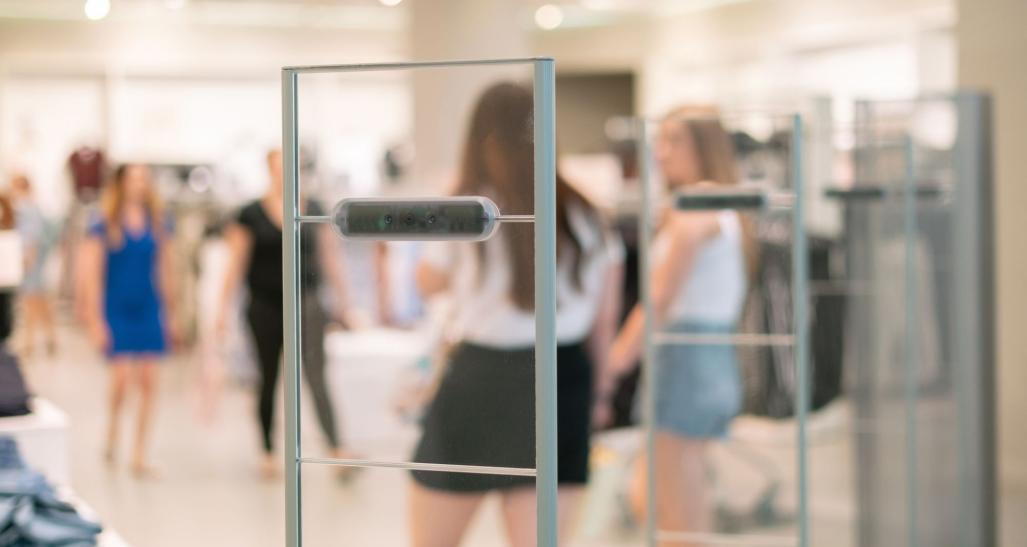
During a recent technology summit focusing on new innovations to prevent theft and loss, three separate senior asset protection leaders left a dinner to respond to large-scale thefts that had just occurred in each of their stores.
One had a vehicle drive through the front door, making way for several people who entered and stole handfuls of merchandise. The second fell victim to another “smash-and-grab,” while the third had a large group steal mass quantities of luxury goods in front of associates and customers. Each theft occurred in a different part of the country.
This dinner took place only a few days after a video made national headlines, showing more than 30 people taking over $300,000 of merchandise from a department store.
Learn more about Fight Retail Crime Day and help advocate for policies that promote community safety and address rising retail crime.
The impact of theft
Over the next several days, as retail CEOs and executives reported quarterly earnings, they shared a common theme of prioritizing the safety and security of employees and customers. They pointed to the impact of increased theft, organized retail crime and rising violence; several executives provided alarming, rising internal statistics related to both theft and violence.
Many discussed how theft impacts their shrink — a calculation used by retailers to identify loss. But regardless of shrink impact, the majority remain concerned over the current and rising state of crime, violence and theft across the retail industry.
Media accounts of these reports ranged from local coverage that highlighted events impacting communities to national coverage emphasizing the issue and its impact on retail employees, consumers and the overall economy.
Some reporters fixed on the topic of shrink rates, even suggesting retailers could be using shrink as a crutch for lagging sales, poor inventory planning or other misses across the business. They highlighted historically stable year-over-year shrink rates or overall low percentages against total sales to argue these retail shrink rates do not indicate the increased level of theft being reported by the retail community.
As a loss prevention professional for more than 37 years, I have held positions across multiple retail segments and led a global, multi-brand loss prevention function. As a consultant, I’ve had the privilege to see firsthand how many great brands operate their loss prevention and asset protection functions.
When it comes to the media stating that shrink does not indicate the truth about retailers’ claims to theft — I agree!
But let’s be clear about what exactly shrink is and what it is not.
Shrink is just part of the story
Shrink (or shrinkage) is a measurement of inventory loss as a percentage of sales during a specific inventory period. It is used to forecast or account for losses in a retail balance sheet. Shrink calculations include losses stemming from theft (by employees and non-employees), administrative or operational errors, mistakes and other identified inventory loss. It is the most common form of measurement and benchmarking regarding retail loss. It also has its flaws.
Shrink calculation and accounting treatments vary by retail segment. Inventory losses can also be reported elsewhere on a balance sheet: In-transit, supply chain or third-party losses might be reported as claims; ecommerce fraud loss might be reported as a financial loss (chargeback/bad debt), even if merchandise was lost in the fraud. Actual loss might not be reflected in a retailer’s inventory shrink calculation.
Shrink also does not factor in non-inventory losses due to theft such as worker’s compensation claims due to violence or injury, store damage due to smash-and-grabs, or even lost sales due to an event.
Shrink is a trailing indicator of inventory loss, lagging behind what’s currently occurring in a retail environment. Determined upon completion of a full physical inventory, shrink calculations are produced annually — perhaps twice a year, depending on the retailer. Many retailers will use cycle counts or off-cycle inventories to identify unit loss and use those results to identify and rectify known loss between inventory periods.
Retailers have more awareness of what is happening right now based on cycle counts (unit loss indicator) and actual incidents reported, before an inventory or calculated shrink percentage.
Focus on the real issue
Industry studies and reports like NRF’s National Retail Security Survey provide value in showing historical data and highlighting these issues publicly. However, given the extensive time and resources required to investigate and resolve these crimes, changes to the retail landscape can outpace available information.
So, yes, it’s true: Shrink does not indicate the true nature of what is happening across the retail industry. We need to stop squabbling over financial indicators and focus on the real issues of rampant theft, rising violence and constant concerns over the safety and security of the retail marketplace.
Browse resources and read NRF's latest articles and press releases related to loss prevention.
What is happening today is outright crime, targeting and taking advantage of a specific industry where committing a crime has few consequences. We are living in a nation where stealing is no longer considered a crime, and those stealing are not criminals. We have created an environment that allows others to instill fear and steal in a “free-for-anyone” environment.
As we continue to dissect how retailers determine their loss, we are missing entirely what is happening every day in retail stores across the nation.
Retailers, financial analysts and accountants might speak of theft and loss, but they use the term “shrink” synonymously. Henry David Thoreau was quoted as saying, “It is not what you look at that matters, it’s what you see.” Today’s issue of retail theft and violence will not be resolved by looking at financial shrink percentages. We, as a society, need to see what is happening and focus on correcting the root cause of these crimes.


